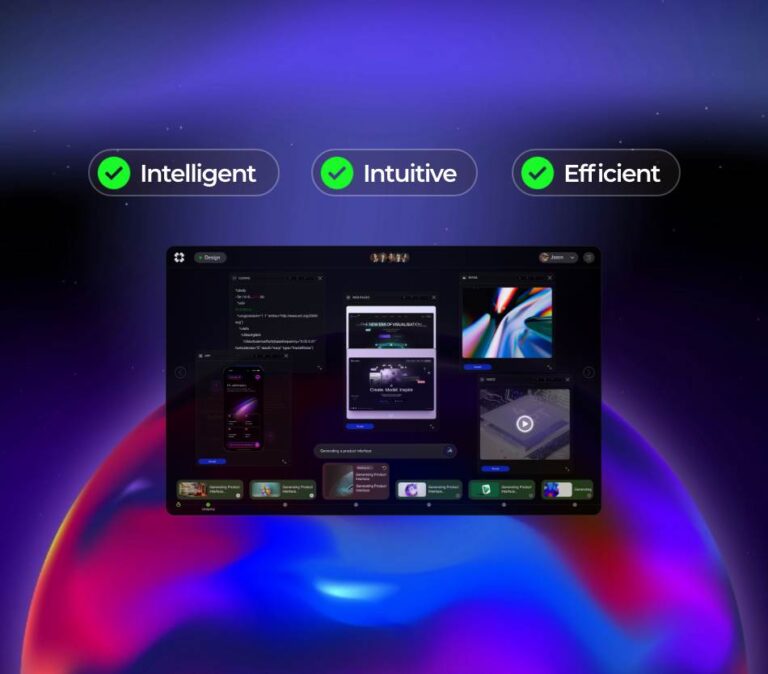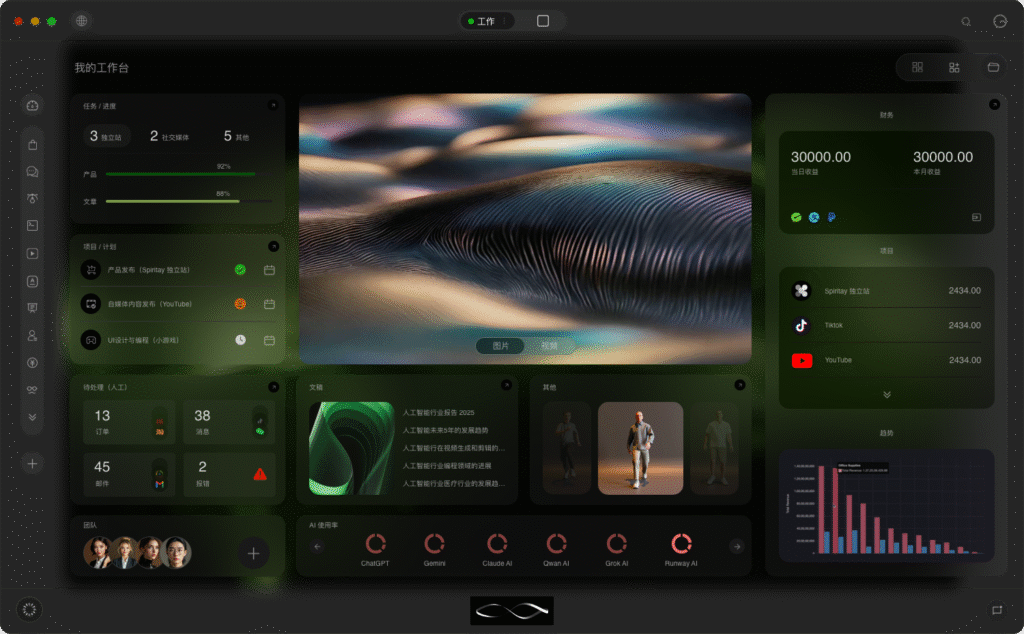Large language models are often discussed as general-purpose brains, but the practical value in automation systems comes when those brains can understand semantics reliably and integrate with workflows. PaLM semantic understanding is a focused capability: converting ambiguous human intent into structured actions, relevant retrievals, or creative outputs within production systems. This article walks beginners, engineers, and product leaders through real-world patterns, architecture choices, vendor trade-offs, and the operational habits that make those systems useful and safe.
Why semantic understanding matters
Imagine a customer types: “My invoice from last month shows double charges after I applied the discount.” A system with shallow keyword matching might miss context, but a model with strong semantic understanding recognizes intent (billing dispute), entities (invoice, discount), and required next steps (verify charge, check discount application). That chain — intent → entities → action — is the foundation of effective automation, whether in chatbots, document processing, or creative workflows.
For someone new to the topic, think of semantic understanding as the bridge between language and system actions. It lets AI map fuzzy human language onto deterministic processes: reroute a ticket, generate a draft email, or populate fields in an ERP system. For product teams, that bridge is often the difference between an experiment and a repeatable, measurable automation.
Core concepts in PaLM semantic understanding
- Embeddings and semantic vectors — convert text, documents, or user utterances into dense vectors so similar meanings can be found via vector search.
- Intent classification — predict the action the user wants, not just the topic; this can be few-shot or fine-tuned.
- Entity extraction — pull structured data (names, invoice IDs, dates) to feed downstream systems.
- Grounded generation / RAG — condition generation on trusted sources to reduce hallucination and provide traceable outputs.
- Chain-of-thought and step planning — break complex tasks into sub-steps an automation engine can execute or validate.
Beginners: practical scenarios and simple patterns
Start with narrow, high-value automations that have observable outcomes. Examples:
- Invoice triage: semantic parsing routes invoices to accounting teams when anomalies are detected.
- Customer support assistants: PaLM semantic understanding detects intent to refund or escalate and fills the ticket form automatically.
- Content briefs for marketing: translate a product update into a structured content outline for writers — an application of AI for creative content.
Begin by measuring baseline manual workflows: time per ticket, average handle time, or time-to-publish for content. Then introduce a small semantic model-powered step such as intent detection and measure delta. Avoid trying to automate end-to-end from day one; target companion automation that augments human work.
Developer view: architecture and integration patterns
Architecting systems around PaLM semantic understanding usually involves these moving parts:
- Input layer — event sources (chat, email, forms) that normalize inputs into a standard envelope.
- Preprocessing — de-identification, token limits enforcement, and metadata enrichment (user ID, locale).
- Model layer — service endpoints for embeddings, classification, and generation. This can be a managed API (e.g., Vertex AI with PaLM models) or a self-hosted stack using model servers or inference engines.
- Orchestration — workflow engine (Airflow, Prefect, custom state machine) or an agent framework (LangChain-style orchestrators) that sequences steps and calls APIs.
- Grounding/knowledge — vector database (e.g., Pinecone, Milvus, or managed Google vector services) for RAG and document retrieval.
- Action layer — connectors to business systems (CRM, billing, ticketing) with transactional guarantees.
- Observability and governance — logging, metrics, auditing, and access controls.
Integration patterns to consider:
- Synchronous API call — immediate intent detection for live chat. Trade-off: must control latency and token cost.
- Async event-driven — ingest messages into a queue, process with a consumer for complex RAG flows. Better for throughput and batching.
- Hybrid — fast intent detection synchronously, deferred RAG or long-tail actions asynchronously.
API design and system trade-offs
Design endpoints around clear responsibilities: /embed, /classify-intent, /generate-grounded, /extract-entities. Each endpoint should return standard metadata: processing time, model version, tokens consumed, and provenance references for any retrieved documents. Important design principles:
- Idempotency and retries — make action endpoints idempotent; include request IDs and safe retry semantics.
- Backpressure and rate limits — protect model endpoints with queuing and throttling to avoid cost spikes or cascading failures.
- Versioning — surface model versions and fine-tune job IDs so you can A/B test and roll back.
Deployment and scaling considerations
When moving from proof-of-concept to production consider three primary deployment routes:
- Managed model hosting (e.g., Vertex AI, managed PaLM APIs): fast to integrate, simpler compliance, but can be costly at scale and offers limited control over latency tuning.
- Managed inference with control plane (Hugging Face Inference or third-party providers): a middle ground with containerized models and some tuning options.
- Self-hosted inference (vLLM, Triton, custom GPU fleets): maximum control and potentially lower marginal cost but requires investment in SRE, GPU ops, and model optimization like quantization and batching.
Scaling tips:
- Batch embedding requests to improve GPU utilization.
- Use adaptive concurrency limits based on p95/p99 latency targets.
- Apply model distillation or smaller specialized models for routine classification to lower cost.
- Monitor token usage as a first-class cost signal.
Observability, monitoring, and common failure modes
Key metrics to track:
- Latency percentiles (p50, p95, p99) for each endpoint.
- Throughput: requests per second and embeddings per second.
- Cost signals: tokens per request, cost per 1k tokens, and cost per inference call.
- Quality metrics: intent accuracy, entity extraction F1, retrieval precision, and downstream task success rates.
- Safety signals: hallucination rate, toxic content flags, and attempts to extract PII.
Common operational pitfalls include unbounded RAG contexts that blow up token costs, silent drift where model predictions degrade without alerting, and inconsistent provenance that makes audits impossible. Instrument provenance early by storing retrieval IDs and model responses alongside actions taken.
Security, governance, and regulatory considerations
Data governance is crucial when models see sensitive inputs. Best practices:
- Use encryption-in-transit and at-rest for vectors and logs.
- Apply data minimization and redaction before sending content to external APIs.
- Enforce access control around model management and fine-tuning artifacts.
- Keep an audit trail linking model outputs to actions for compliance and debugging.
Regulatory context: legislation like the EU AI Act and privacy laws (GDPR, CCPA) require transparency, risk assessments, and, in some cases, human oversight. For enterprise deployments, a model risk register and documented mitigations are now standard.
Product & market perspective: ROI and vendor comparisons
Adoption decisions hinge on three product signals: quality lift, cost, and integration friction. Example ROI patterns:
- Customer support: automating triage and suggested responses often yields measurable reductions in time-to-resolution and agent workload — a typical payoff window is 3–9 months for mid-sized teams.
- Marketing teams using AI for creative content can speed draft generation and topic ideation, but editorial review remains a gating factor; track time saved per asset and conversion or engagement uplift.
- Back-office automation (invoicing, compliance) sees high ROI because tasks are repetitive and well-scoped; reduce manual steps and error rates to quantify benefit.
Vendor trade-offs:

- Google PaLM via Vertex AI — great integration with Google Cloud data services and strong model capabilities, lower friction for enterprises already on GCP.
- Anthropic / other large model providers — competitive guardrails and different safety profiles; useful for multi-vendor strategies.
- Open-source stacks (LLaMA-family, Falcon) — lower per-inference costs and more control, but require expertise in optimization and more SRE investment.
Case study snapshots
Company A — a SaaS billing provider — added a PaLM semantic understanding layer for invoice dispute classification and automated responses. By routing disputes more accurately and auto-suggesting resolution steps to agents, they reduced average dispute resolution time by 28% and cut manual triage costs by 40% within six months.
Company B — an agency using AI for creative content — integrated semantic brief generation to produce first-draft outlines and keyword-rich sections. Human editors took these drafts, refined tone, and published faster. The net benefit was a 2x increase in drafts produced per week and a modest uptick in engagement metrics while keeping editorial quality consistent.
Risks and mitigation strategies
- Hallucination — mitigate with RAG and citation requirements; add plausibility checks and human-in-the-loop validations for high-stakes actions.
- Bias and fairness — monitor demographic performance, add guardrails in downstream logic, and keep retraining cycles transparent.
- Cost overruns — apply token budgets, aggressive sampling, and fallback lightweight models for routine cases.
Future outlook and standards
Expect two parallel trends: more specialized embeddings and lightweight semantic models for routine tasks, and larger, governance-friendly models for open-domain reasoning. Emerging standards around model cards, evaluation suites for retrieval-augmented systems, and regulatory frameworks will push teams to document capabilities and risks more rigorously.
Open-source tooling and orchestration frameworks like LangChain, Ray, and vector databases are maturing fast. That lowers the barrier to experiment, but production-grade deployments still demand disciplined ops and governance.
Implementation playbook (step-by-step guide in prose)
1) Start with a clear metric and narrow use case: choose a single workflow that has measurable manual effort and clear success criteria. 2) Prototype intent and entity extraction using a managed PaLM endpoint to validate accuracy. 3) Add a grounding layer: index your documents into a vector store and evaluate retrieval precision. 4) Orchestrate the flow: wire intent detection and retrieval into a state machine that can fall back to human routing. 5) Instrument quality metrics and cost signals. 6) Run a pilot with human reviewers and collect feedback loops for fine-tuning. 7) Harden security, implement rate limits, and prepare a rollback plan. 8) Scale iteratively by offloading routine classification to smaller models and reserving the PaLM-based flows for complex or creative tasks.
Final Thoughts
PaLM semantic understanding is not a magic bullet, but a practical capability that converts natural language into structured, auditable automation. For technical teams, the work is integrating models into reliable pipelines with observability, cost control, and governance. For product teams, the task is finding narrow, measurable workflows where semantics yield clear gains. With careful design — grounding, modular architectures, and real operational discipline — PaLM-driven semantics can accelerate both AI for creative content and robust AI chat assistants that reduce workload and increase customer satisfaction.










